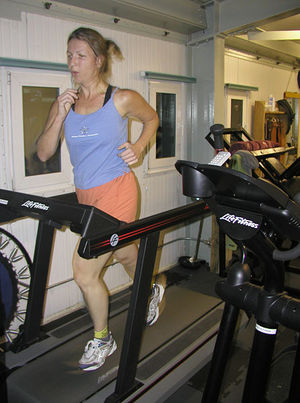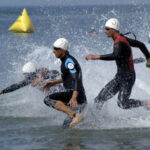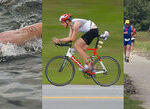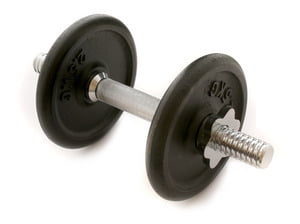If you are training for a triathlon, it is always best to complete the majority of your training outdoors. There are many advantages to training outside, namely, that you will be better prepared for the real conditions of the triathlon. Using machines or lap lanes to train for your triathlon can give any triathlete unrealistic expectations about his or her abilities in running, swimming, biking or any combination of the three.
But there may be circumstances in which you have no other alternative than to train indoors. For example, you may be planning on completing an indoor triathlon, such as the events commonly held by Lifetime Fitness. Or you may want to begin your triathlon training early, but the weather is not mild enough for training outside. Perhaps your triathlon takes place in April, and it isn’t possible to practice open swimming in the lake beforehand. And then, there are many circumstantial reasons why one might choose to train indoors, such as convenience, special health concerns and possible lack of outdoor training opportunities for urban dwellers (I usually find this to be untrue-even the biggest cities usually have great parks in or around the metro area).
Whatever the reason, if you have chosen to work on training indoors, it is important to recognize the differences between indoors and outdoors training and the difficulties it may cause you when competing in the actual triathlon. With knowledge, you can make adjustments in your training that will account for these potential hazards.
Swimming
Swimming in a pool is nothing like swimming in a lake or ocean. If you train in a swimming pool, you will have the added advantage of the wall to push off of, which will not be available when you are swimming in the middle of a lake. Pushing off the wall every 25 yards makes swimming incredibly easier, given the increased momentum and brief reprieve. Also, swimming in a pool does not involve weeds, much, huge waves or the mass chaos experienced at the beginning of many triathlons, during which many swimmers get kicked in the face. Similar problems arise when one commits too much of his or her training to machines such as the treadmill or stationary bike. If at all possible, try to swim in a 50 meter swimming pool. This is pretty rare to find indoors, but if you live near a large university, you might be able to use their Olympic pool during specified open and lap swim times. The obvious advantage of a 50 meter swimming pool is that there are fewer opportunities to “cheat” by pushing off the wall.
If you can’t use a 50 meter pool, be sure to always do flip turns when you swim laps, as these decrease the amount of “rest time” you get at the side of the pool.
Biking
You may want to consider investing in a trainer, if not for the triathlon training, for the ease it brings to slipping in exercising whenever you can, even while you watch television. It is wonderful, because, unlike stationary bikes that give an inaccurate feeling of outside biking, a trainer allows you to use your own bike and work on your technique and form. The three types of indoor bike trainers are fan, magnetic and fluid. Each has various situations that are served better than others by that type of bike-for example, fan trainers are best for spinning class. The best type for triathlon training is a fluid trainer, which offers more of a “road-like” feel and a higher resistance level than other trainers.
Running
When training indoors,running on a track is always preferable to using the treadmill. Running on solid ground has a much different feel than running on a treadmill. The impact from running on a treadmill is much lower, and the quality of the movement will always be different between the treadmill and running outside or on a track. If you must use a treadmill, try to incorporate some running workouts with a steep grade. This will mimic some of the hills you may face during the real triathlon.
Other Tips
If you don’t have access to a pool, work on biking and running exercises and use a rowing machine to improve your arm strength
Work on blocking workouts just as you would when training outdoors. For example, bike 10 miles on the trainer or stationary bike, and then switch immediately to running on a track or treadmill for 3 miles.
If you are running an Olympic triathlon, try competing in an indoors sprint triathlon before the outdoors Olympic triathlon-it will serve as great training and practice, and will help you adjust to transitioning between swimming, biking and running.





